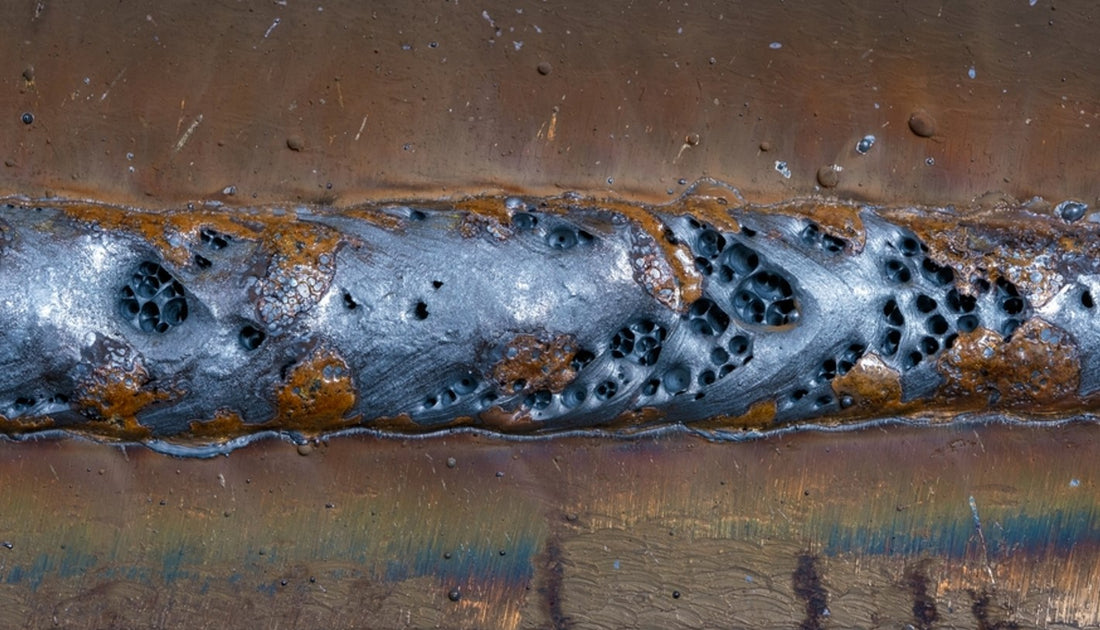What is Porosity in Welding: Key Factors and Their Impact on Weld Top Quality
What is Porosity in Welding: Key Factors and Their Impact on Weld Top Quality
Blog Article
Porosity in Welding: Identifying Common Issues and Implementing Best Practices for Prevention
Porosity in welding is a pervasive concern that commonly goes unnoticed till it causes considerable problems with the stability of welds. This typical problem can endanger the toughness and longevity of welded structures, posing safety threats and bring about costly rework. By understanding the origin causes of porosity and executing efficient prevention strategies, welders can considerably enhance the quality and dependability of their welds. In this conversation, we will check out the vital aspects contributing to porosity formation, analyze its detrimental effects on weld performance, and go over the finest methods that can be embraced to reduce porosity incident in welding processes.
Common Sources Of Porosity

One more frequent culprit behind porosity is the presence of pollutants externally of the base metal, such as oil, oil, or corrosion. When these impurities are not effectively removed before welding, they can evaporate and become caught in the weld, creating problems. Using dirty or damp filler products can present contaminations into the weld, adding to porosity issues. To mitigate these common reasons of porosity, detailed cleaning of base steels, correct protecting gas option, and adherence to optimal welding criteria are essential techniques in accomplishing high-quality, porosity-free welds.
Influence of Porosity on Weld High Quality

The existence of porosity in welding can considerably compromise the architectural honesty and mechanical residential properties of welded joints. Porosity develops spaces within the weld metal, deteriorating its general stamina and load-bearing capability.
Welds with high porosity degrees have a tendency to exhibit lower impact stamina and minimized ability to deform plastically before fracturing. Porosity can hinder the weld's capacity to effectively send forces, leading to premature weld failure and possible safety threats in critical frameworks.
Best Practices for Porosity Avoidance
To improve the architectural integrity and high quality of welded joints, what details procedures can be applied to decrease the event of porosity throughout the welding process? Porosity prevention in welding is critical to ensure the integrity and strength of the last check out this site weld. One effective technique appertains cleaning of the base steel, removing any type of impurities such as corrosion, oil, paint, or dampness that could result in gas entrapment. Guaranteeing that the welding equipment is in great condition, with tidy consumables and suitable gas flow rates, can also dramatically minimize porosity. In addition, preserving a stable arc and regulating the welding specifications, such as voltage, present, and travel speed, helps develop a regular weld swimming pool that minimizes the risk of gas entrapment. Making use of the right welding strategy for the certain material being welded, such as adjusting the welding angle and gun placement, can additionally protect against porosity. Normal examination of welds and prompt remediation of any kind of problems determined during the welding process are important techniques to stop porosity and generate high-quality welds.
Value of Appropriate Welding Techniques
Applying proper welding techniques is paramount click to find out more in ensuring the architectural integrity and high quality of welded joints, developing upon the structure of effective porosity avoidance steps. Extreme warm can lead to enhanced porosity due to the entrapment of gases in the weld swimming pool. Additionally, utilizing the appropriate welding parameters, such as voltage, present, and take a trip rate, is crucial for achieving audio welds with marginal porosity.
In addition, the option of welding process, whether it be MIG, TIG, or stick welding, should straighten with the certain needs of the task to make sure optimal outcomes. Appropriate cleaning and prep work of the base metal, as well resource as picking the ideal filler product, are additionally important elements of proficient welding methods. By adhering to these best practices, welders can lessen the risk of porosity development and generate top notch, structurally sound welds.

Examining and Quality Assurance Actions
Quality control measures play a critical function in verifying the stability and reliability of welded joints. Evaluating procedures are important to identify and prevent porosity in welding, making sure the stamina and sturdiness of the last item. Non-destructive screening approaches such as ultrasonic testing, radiographic screening, and visual assessment are generally employed to determine prospective flaws like porosity. These methods permit the assessment of weld quality without compromising the integrity of the joint. What is Porosity.
Performing pre-weld and post-weld evaluations is likewise critical in maintaining top quality control standards. Pre-weld assessments include validating the products, equipment setups, and cleanliness of the workplace to stop contamination. Post-weld evaluations, on the various other hand, evaluate the last weld for any type of issues, consisting of porosity, and confirm that it satisfies specified requirements. Applying a comprehensive top quality control strategy that includes thorough testing treatments and examinations is extremely important to minimizing porosity problems and ensuring the total high quality of bonded joints.
Verdict
Finally, porosity in welding can be a typical problem that affects the top quality of welds. By recognizing the common causes of porosity and applying ideal methods for prevention, such as proper welding methods and screening procedures, welders can guarantee premium quality and trusted welds. It is important to focus on avoidance techniques to lessen the incident of porosity and maintain the stability of welded structures.
Report this page